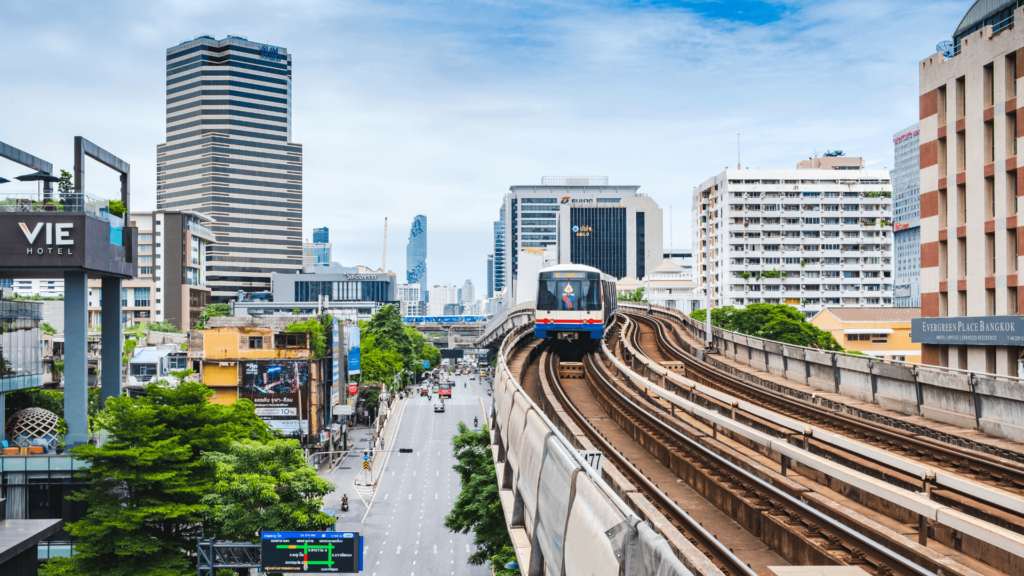Single Digital Booking and Ticketing – Is there a need for more regulation?
This article by Juan Montero and Matthias Finger, Director and Deputy Director of FSR Transport, originally appeared in the European Transport Regulation Observer 'Single Digital Booking and Ticketing'
The European Commission was active in digital mobility very early on with the Code of Conduct for the Use of Computerised Reservation Systems, also called Global Distribution Systems (GDS) (1989), in the aviation sector. This regulation sought to address vertical integration of these GDSs with some dominant airlines in Europe and the US, something that today is no longer the case as airlines have been divested of GDSs. In 2010, Directive 2010/40/EU – also known as the ITS Directive – provided a framework for common standards and specifications in the European Union (EU) for the creation of intelligent transport systems (ITSs) in the field of road transport. Based on this Directive, Delegated Regulation (EU) 2017/1926 requires data holders, such as transport operators, transport authorities, infrastructure managers and transport-on-demand service providers, to make information (such as timetables, bike-sharing stations, stations and bus stops) accessible via national access points (NAPs) in each member state.
A New Digital and Regulatory Landscape
However, in 2020 the context somewhat changed. On the one hand, the EU started to worry about the rise of global digital non-European platforms and developed cross-cutting regulations addressing the market power of digital platforms – the Digital Market Act (DMA) and the Digital Service Act (DSA). In parallel, it sought to develop a European data economy and internal market (DGA, 2021 – access to the EU data market for SMEs; Data Act, 2022 – access to IoT data, B2B and B2G data exchange).
Furthermore, the context had also changed for transport, with much greater concern about decarbonisation, as materialised in the Smart and Sustainable Mobility Strategy (2020), which stressed the use of digitalisation for more efficient, more decarbonised multimodal mobility. It is in this context that in 2021 the MDMS – Multimodal Digital Mobility Services – initiative was launched so as to be better able to plan and buy tickets for journeys that combine different modes of transport (concretisation of Action 37 of the sustainable and smart mobility strategy). MDMS targets public transport and rail services in particular to achieve seamless multimodal passenger transport. At the same time (2021) a revision of the Multimodal Travel Information Service Directive (MMTIS) was launched and some sort of agreement was reached that the GDS Regulation should be revised (also in 2021). However, the MDMS Initiative was abandoned in February 2025, while the MMTIS revision is still in progress, and the need for a revision of the GDS Regulation persists. To complete this contextual picture, it must also be mentioned that in 2023, and grounded on the aim of the Data Act to create European-wide sectoral data spaces, the EU, and in particular DG MOVE, started work on a European Mobility Data Space (EMDS), the aim of which is to facilitate access, pooling, and sharing of data from existing and future transport and mobility data sources.
The European Commission has been involved in digital mobility since 1989, initiating the Code of Conduct for Computerised Reservation Systems in the aviation sector. In the current context, the Commission is proposing a Single Digital Booking and Ticketing Regulation to allow European citizens to purchase a single ticket on one platform. Discussions have highlighted several challenges, including the need to maintain social welfare from network effects while navigating the risks of monopolies and platformisation in transport. The EU aims to replicate successful regulatory strategies used for traditional infrastructure to address these challenges.
It is in this new context that the Commission is now seeking to develop a Single Digital Booking and Ticketing Regulation to ensure that European citizens can buy one single ticket on one single platform and get passengers’ rights for their whole trip, something that was stressed again by President Ursula von der Leyen in her Political Guidelines for the Next Commission and in her Mission Letter to the Commissioner for Sustainable Transport and Tourism. Discussions during our Florence Forum showed the difficulties involved in this endeavour. Our contribution to this debate is to identify four main considerations that in our view must be taken into account before moving forward.
Four Considerations Before Regulating
First, from the traditional physical network industries – in particular telecoms, postal services and all transport modes – we already know about the social welfare created by network effects, meaning that the more users are connected to a network, the more beneficial the network is for all other users. From the liberalisation of these network industries, we also know that unbundling infrastructure from services allows these network effects to be preserved while at the same time adding the welfare-enhancing benefits of competition. From the past 10-15 years of digitalisation, we also know that the same network effects, and even more powerful ones, are leading to global monopolies on the one hand and to platformisation of physical service deliverers on the other hand. Both these results are to the detriment of social welfare, and this is no different in the case of transport (infrastructure and services). The regulatory challenge for these new digital network industries, therefore, is just like it was in the traditional physical ones: to preserve the welfare benefits of the new powerful network effects generated by digital platforms, while avoiding the drawbacks resulting from monopolisation and platformisation of them.
And this is precisely what the EU is trying to do by applying the same regulatory recipes that have proven successful for traditional physical infrastructure. On the one hand, the Commission is limiting the market power of global platforms by way of the DSA and the DMA. On the other hand, it is creating a single European market for data by developing 14 EU-wide data spaces, one of which is a European mobility data space (EMDS). These initiatives will create a framework for new digital mobility and other services. Whatever has and will be done in these two areas – platform regulation and EMDS – will have to been taken into account when regulating digital booking and ticketing.
Second, any regulatory initiative on digital booking and ticketing will have to answer the ‘public policy question’: what public policy objectives are digital booking and ticketing seeking to concretely achieve? At the moment, several implicit objectives seem to be being pursued simultaneously, namely (1) enhancing choice and protection for (mobility) consumers, (2) decarbonisation and a modal shift, (3) facilitating cross-border travel, especially by rail, and (4) dynamisation of the rail and more generally the public transport sector. Before regulating, the Commission (DG MOVE) would be well advised to think about which of these, and perhaps other public policy objectives, can realistically be furthered by way of digital booking and ticketing and which cannot. Also, in this context the future of both MMTIS and the Code of Conduct for GDSs should be considered.
Third, regulation should focus on resolving market failures and should promote digitalisation in transport. The application of competition law has already demonstrated that there is a market failure in content sharing by incumbent railway companies. Regulation could build on such practice, as was the case of the DMA. There is also a case for cross-border rail services and public service obligation rail services instead based on general interest considerations. Is there a case for going beyond these scenarios?
Fourth, a case has to be made for platform regulation. Over the last decade our knowledge of abusive practices by digital platforms has significantly grown. We know that defining the market in multi-sided markets is complex, which suggests establishing alternative thresholds to trigger asymmetric regulation. How demanding should the thresholds be? Should they be low enough to be applied before tipping points are reached? We know that ranking by platforms is able to distort intermediate markets, particularly when platforms are vertically integrated (self-preferencing). We know that disintermediation can be reduced with anti-steering prohibitions on using data to compete with professional users, and sharing data back obligations. Are these issues for transport and mobility platforms?
Read the full Policy Brief ‘Single digital booking and ticketing, and multimodal digital mobility services’ for more information.





